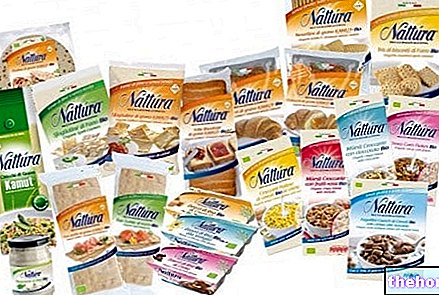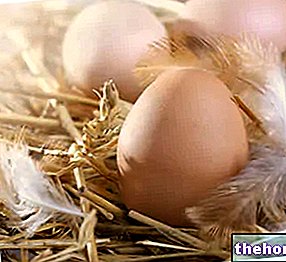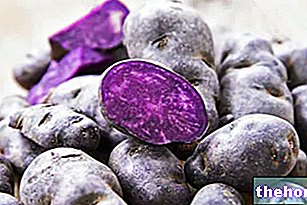By quail eggs we mean the unfertilized female germ cells of the Japanese quail - bird of the biological order Galliformes, Family Phasianidae, Subfamily Perdicinae, Genus Coturnix and species japonica; read also "Quail as Food".

Quail eggs are foods of animal origin that have been part of the Italian gastronomic tradition for centuries. Quail eggs are included in the 1st fundamental group of foods - foods rich in proteins with high biological value, minerals and specific vitamins - and, compared to those of hen, quail eggs provide a higher quantity of cholesterol, iron and potassium and water-soluble vitamins. of group B; the level of vitamin A and vitamin D is, on the other hand, less relevant. In the next paragraph we will go into more detail.
Quail eggs are suitable for most diets even if, due to their biological and chemical nature, they have a nutritional content that can make their consumption not recommended in case of certain diseases and conditions - especially hypercholesterolemia.
Very different from the much more common chicken eggs, they appear to be much smaller and variegated in color - gray-beige background dotted with brownish. Nor do they resemble goose, turkey, guinea fowl and ostrich eggs - the most consumed group of eggs in the world - which are even larger in size. A quail egg weighs about 20 g in shell and only a scant 10 g in shell; the total volume is more or less equal to 20% (1/5) of an average hen.
From the gastronomic point of view, quail eggs are intended more or less for the same purposes as the others and are prepared with the same cooking methods and systems; obviously, being small in size, they can be prepared with much shorter times. It is also possible to consume them raw but, for hygiene reasons, it is generally not recommended - even more so in pregnancy, early childhood and in conditions of immunosuppression. Hard-boiled quail eggs - also for their decorative feature - and quail egg omelette are particularly popular, while intermediate preparations such as intermediate cooking - with hard-boiled egg white and soft yolk are more problematic.
Quail eggs have the same shelf life as chicken eggs. They can be kept out of the refrigerator but for a limited period of time and suggested in the package. When they are no longer fresh, they show a mushy, brittle yolk - which breaks easily - an almost liquid egg white - no longer gelatinous - and a weak and deflated air chamber. Quail eggs must be supplied on a regular basis; they can be found, especially during amateur hunting, even in the wild - as well as duck, coot, moorhen, pheasant, etc. eggs. In this case, for various reasons, it is however not recommended to collect them; briefly:
- Ethical reason: in many places in Italy quails have diminished and disappeared
- Food reason: they are almost certainly fertile eggs and unsuitable for the specific consumption of traditional eggs
- Hygienic reason: the chances are high that they can be contaminated - even superficially - by pathogenic microorganisms such as salmonella, coliforms, etc.
They have a significant energy intake, provided mainly by lipids, followed by proteins and finally by very few carbohydrates. Fatty acids are predominantly unsaturated, with a higher percentage of monounsaturated. Peptides have a high biological value - they contain all essential amino acids in the right proportions and quantities compared to the human protein model. The few carbohydrates present are soluble type; it is basically glucose monosaccharide.
Quail eggs do not contain fiber; instead they have a very high cholesterol level, even 60% higher than that of chicken eggs - sterol is contained only in the yolk. The purine content is moderate. The intake of phenylalanine amino acid is very high. The level of histamine is also low but, on the other hand, egg white is considered a highly histaminoliberative food. Gluten and lactose are absent.
Regarding the "vitaminic intake, quail eggs contain significant quantities of water-soluble molecules of group B: thiamine (vit B1), riboflavin (vit B2), niacin (vit PP), pantothenic acid (vit B5), pyridoxine (vit B6 ), biotin (vitamin H or B8) - of which the absorption can be compromised only if the eggs remain raw, due to the presence of the thermolabile anti-nutrient avidin - folates - they are not very abundant but are still important, since they are lacking in most foods of animal origin - cobalamin (vitamin B12). The vitamin level of fat-soluble products is also remarkable; in particular, retinol and equivalents (vitamin A and provitamin A or RAE), calciferol (vitamin D) and alpha tocopherol or tocotrienol (vit E). Note: compared to chicken eggs, quail eggs have on average more vitamins of group B and less vitamins D and A.
As far as the mineral profile is concerned, quail eggs have an "excellent concentration of iron, phosphorus and zinc. The potassium level is less important and the calcium level is marginal.

Due to the significant supply of essential amino acids, quail eggs are recommended in the diet of those who have an increased need for these nutrients. This may be due to physiological or paraphysiological conditions, such as growth, pregnancy, breastfeeding, reduced digestion or absorption capacity due to old age, the practice of exceptionally intense and / or prolonged sports activities, etc. Or to diseases and inappropriate food behaviors that can cause a state of malnutrition, for example: gastric resections, hypochlorhydria, intestinal resections, pathologies of the exocrine pancreas, general or specific malnutrition, etc.
The lipid profile of quail eggs is actually quite good. The excellent distribution of fatty acids - most of which omega 9, omega 3 and omega 6 - would make them suitable for diet against metabolic pathologies; moreover, omega 3 and omega 6 are essential fats, which the body must necessarily supply through diet. Above all, omega 3, have a "fundamental importance to say the least: they structure cell membranes, are important for the nervous and ocular development of the fetus and child, help to reduce the depressive symptom in certain forms of neurosis, favor the preservation of abilities cognitive in old age etc. However, quail eggs also contain a "huge amount of cholesterol - in the yolk. This is why, especially in the case of hypercholesterolemia, consumption must be very limited or even avoided. Keep in mind that a 50 g portion of quail eggs contains 140% of cholesterol compared to the recommended daily allowance for a healthy person. , and up to 210% for that of hypercholesterolemic people.
Quail eggs lend themselves to the nutritional regime against lactose and gluten intolerance; they are also appropriate in case of hyperuricemia and tendency to the formation of uric acid kidney stones - renal lithiasis. On the contrary, they are not recommended for intolerance with histamine; egg white is in fact a histaminoliberative food. The same applies to phenylketonuria, given the considerable presence of the amino acid phenylalanine contained in them.
The B vitamins have a mainly coenzyme function; this is why quail eggs, which should be rich in it, can be considered a good source of nutrients that support the cellular functions of all tissues. Particularly appreciable is the quantity of cobalamin (vitamin B12) - deficient in the vegan diet and very important in pregnancy - as well as folate, normally almost absent in foods of animal origin - also essential during gestation, but nevertheless thermolabile and therefore sensitive to cooking.
Retinol (vit A) is essential for the support of visual and reproductive function and for cell differentiation; the retinol-equivalents (RAE), on the other hand, are powerful antioxidants. Vitamin D (calciferol) is crucial for bone metabolism and the immune system. Note: remember that food sources of vitamin D are very rare. Alpha tocopherol or tocotrienol (vitamin E) is another very effective antioxidant factor.
Iron has the primary function of constituting the heme group, present above all in the "hemoglobin of red blood cells; a possible deficiency - more frequent in fertile, pregnant, malnourished and marathon runners - can cause iron deficiency anemia. quail are therefore useful in the prevention and treatment of this discomfort. The good quantity of zinc helps to support the production of some enzymes responsible for the body's endogenous antioxidant action. Phosphorus, which is hardly lacking in the diet, is a necessary constituent of the body. hydroxyapatite - bone mineral - and phospholipids - abundant in cell membranes and nervous tissue. Potassium is an alkalizing mineral essential for the conduction of the neuromuscular signal; largely lost with sweating, urine and diarrhea, if deficient it can cause muscle cramps. A good supply is considered therapeutic in primary arterial hypertension. Quail eggs contain good percentages and, even if they are not among the primary nutritional sources, they still participate in covering specific needs.
For hygienic reasons, even if purchased from safe sources of supply, quail eggs are only allowed cooked in the pregnancy diet.
Quail eggs do not lend themselves to the vegan diet, while they are suitable for the lacto-ovo vegetarian philosophy; they should also be avoided in the Hindu and Buddhist regimes. On the other hand, they have no contraindications for Judaism and Muslimism.
The average portion of quail eggs - as a dish - could be 100 g (about 150 kcal), but the huge amount of cholesterol suggests that these are foods to be consumed occasionally.
- and by convection - baked.Due to their extremely small size, very few people choose to eat them soft-boiled. Even being careful, it is difficult to break only one vertex of the small egg to soak the bread; with this system they can be very pleasant "to drink", in order to avoid leaving them raw.
On the other hand, the recipe for bazzotte e pochè quail eggs is more common, which requires only the egg white to be solidified, leaving the yolk liquid; the difference between the two recipes is that while the bazzotte eggs are cooked in the shell, the pochè are shelled first and they are collected in special baking cups.
The quail egg omelette is famous, both in the pan and in the oven, based on extra virgin olive oil or butter and sometimes enriched with other ingredients such as cherry tomatoes, courgettes, peppers, cheese etc.
An excellent carbonara pasta can also be produced with quail eggs, but there are greater uses in cold recipes, such as salads and mixed appetizers.




























